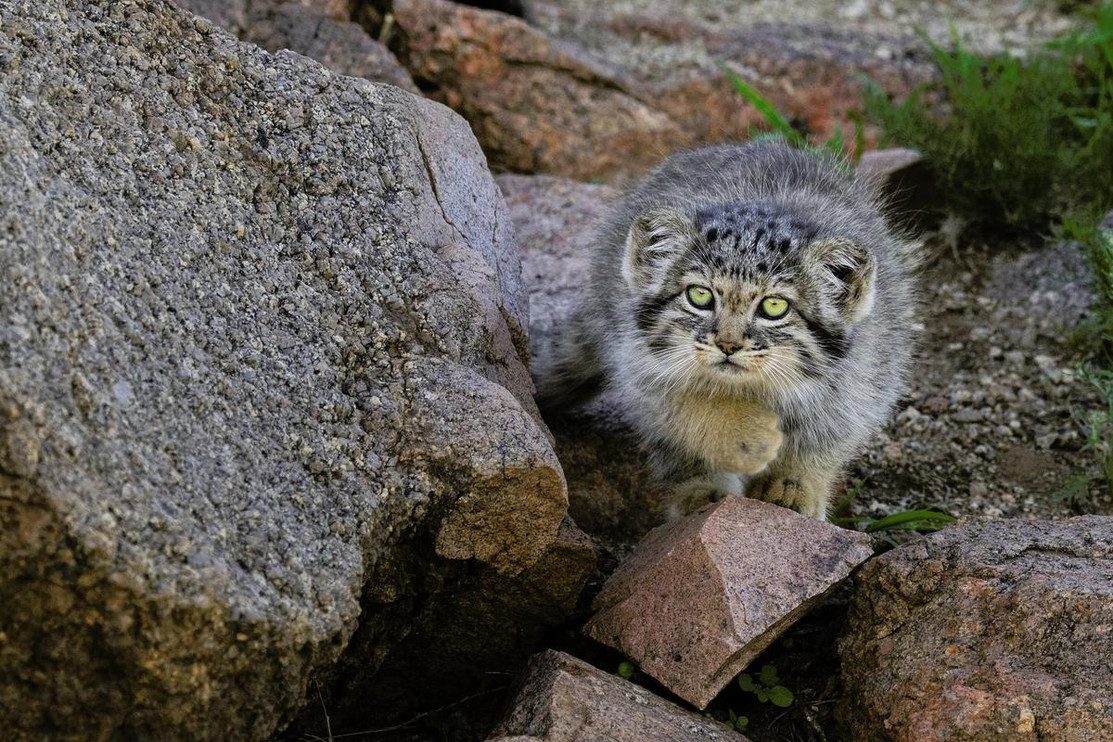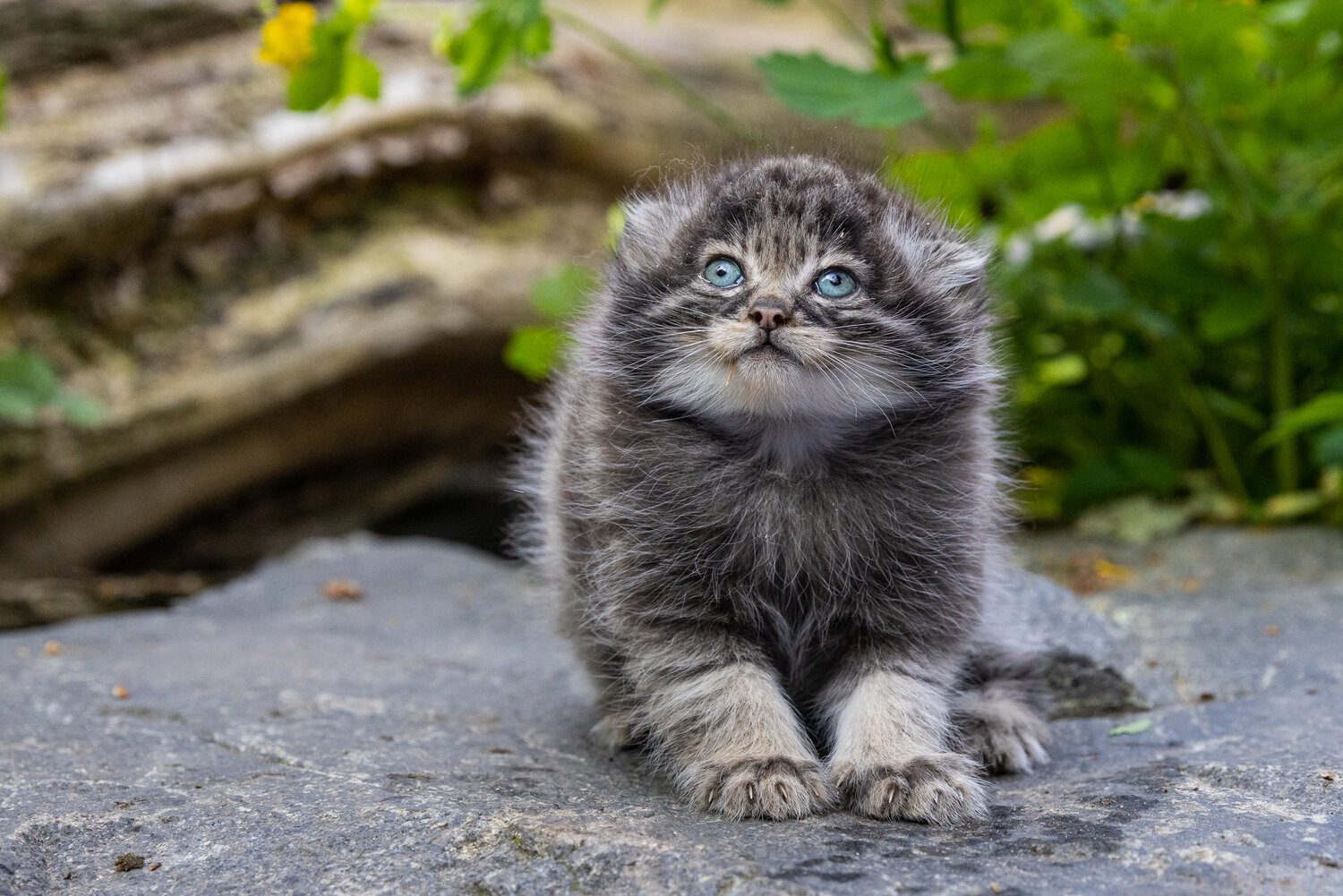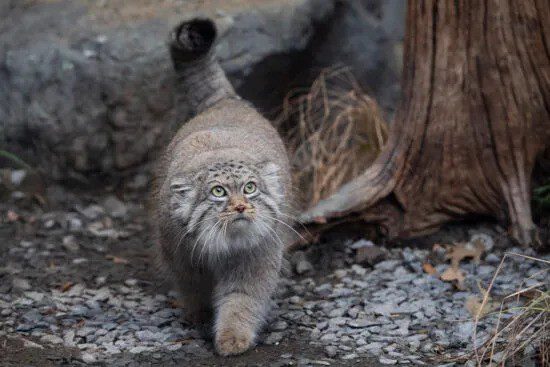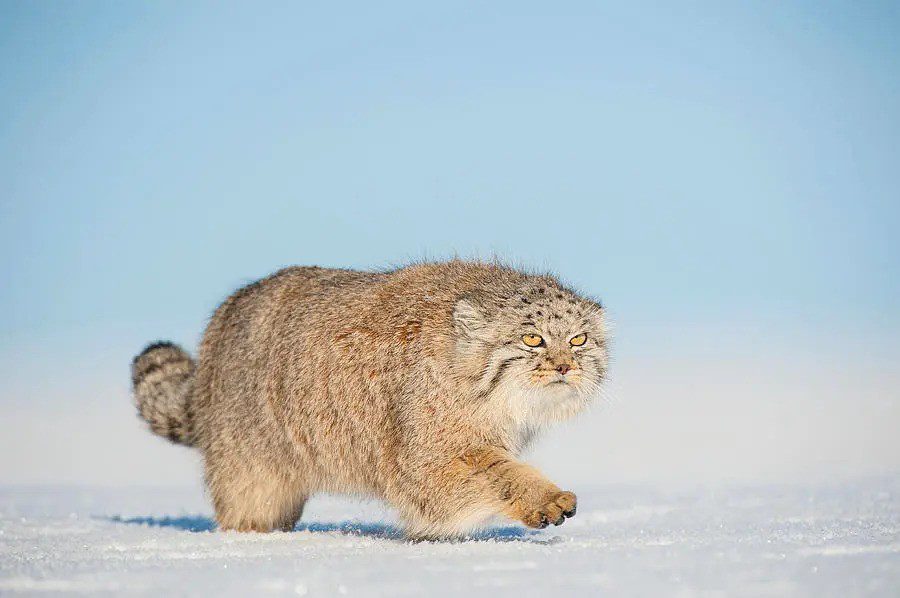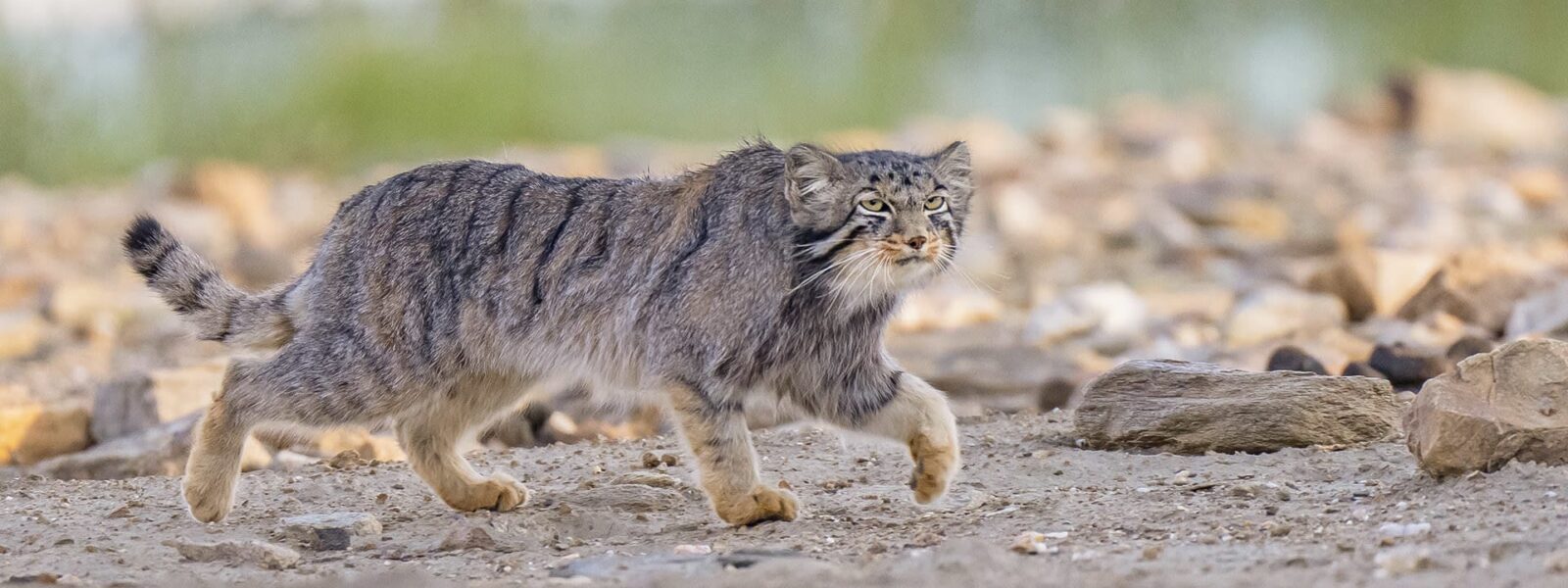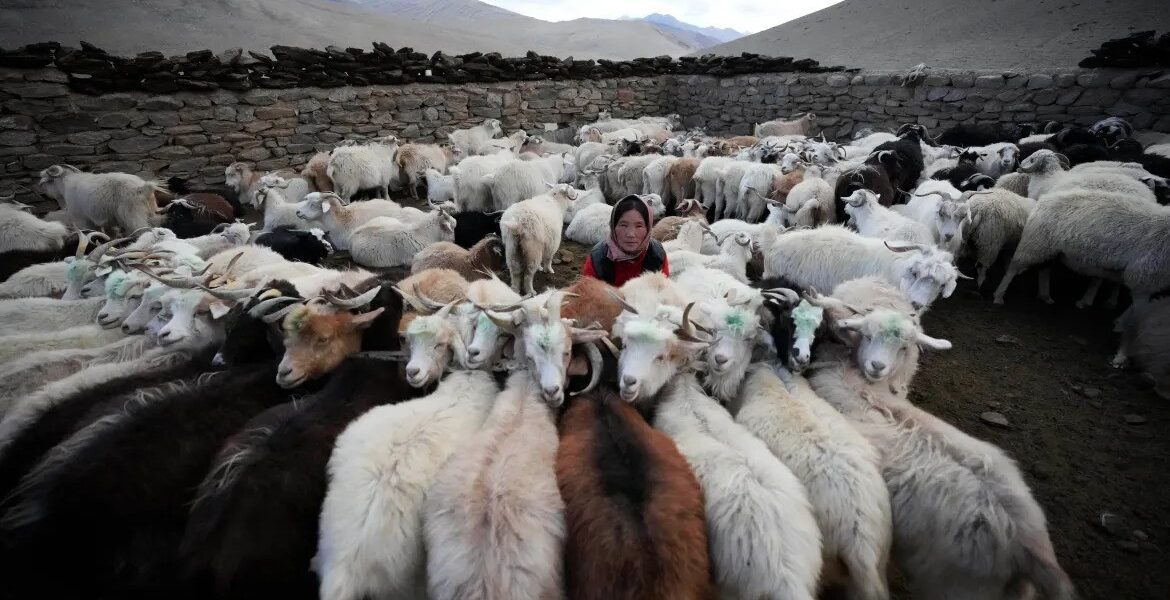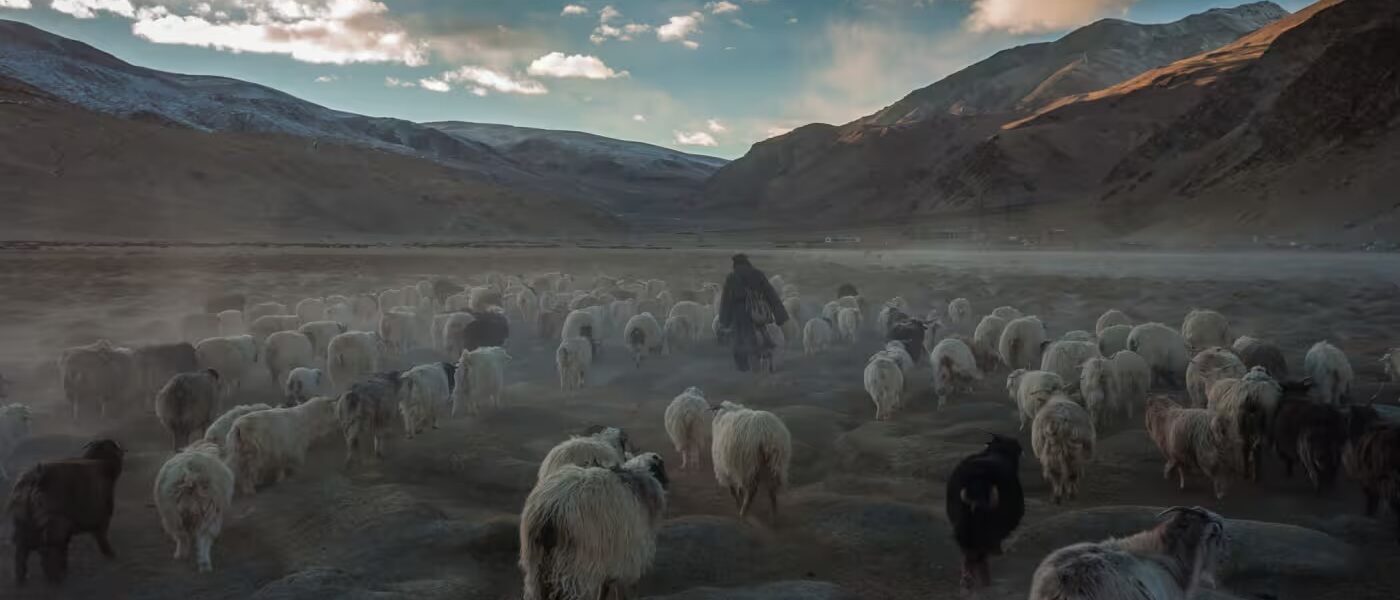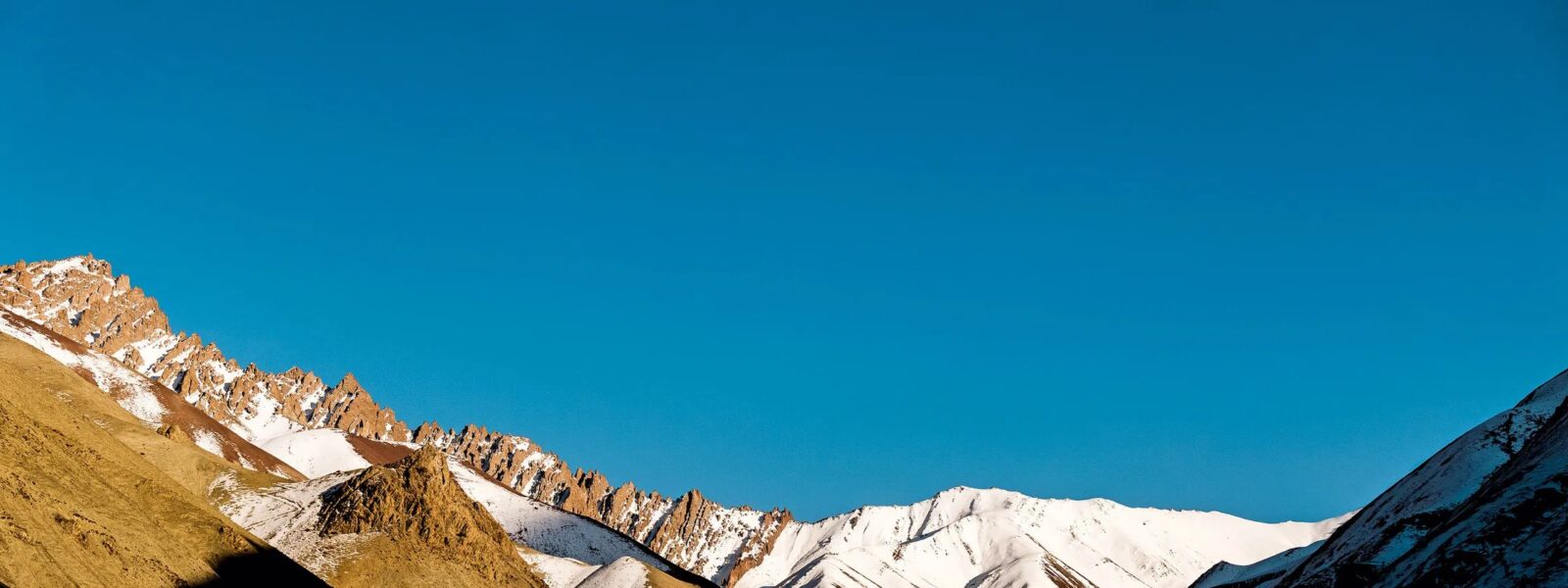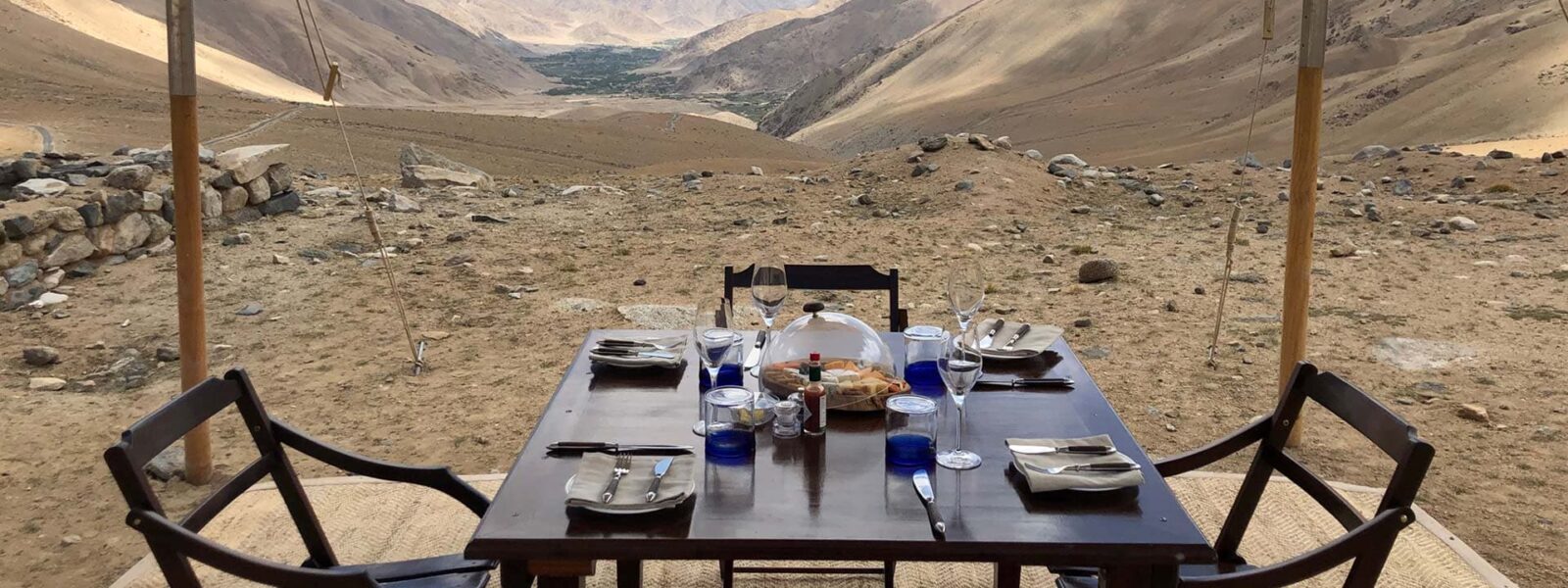Discover the fascinating world of the Pallas’s cat, a small but fierce wild feline known for its distinct appearance, elusive nature, and resilience in harsh climates.
Also called the manul, this remarkable cat has a story that spans centuries, from the desolate mountains of Central Asia to its status as a beloved symbol in zoos and online culture.
Table of Contents
- Introduction to Pallas’s Cat
- Taxonomy and Classification
- Physical Characteristics
- Distribution and Habitat
- Behavior and Ecology
- Diet and Hunting
- Reproduction and Life Cycle
- Threats and Conservation Status
- In Captivity
- Fun Facts and Popular Culture
- Testimonials
- Q&A
Introduction to Pallas’s Cat
The Pallas’s cat (Otocolobus manul), sometimes called the manul, is one of nature’s most extraordinary wildcats. Adapted to survive in some of the most inhospitable environments on Earth, this stocky, long-haired feline thrives in the remote mountains, steppes, and shrublands of Central Asia.
Known for its unique flat face, round pupils, and dense fur, the Pallas’s cat combines adorable looks with a fierce predatory instinct. Despite its status as Least Concern on the IUCN Red List, the species faces significant challenges due to habitat loss and human activity.

Taxonomy and Classification
| Scientific Name |
Otocolobus manul |
| Common Name |
Pallas’s Cat, Manul |
| Family |
Felidae |
| Genus |
Otocolobus |
| Described By |
Peter Simon Pallas (1776) |
Subspecies:
- O. m. manul: Found in northern and western Central Asia.
- O. m. nigripectus: Inhabits the Himalayas.
The Pallas’s cat was first described by Peter Simon Pallas, a naturalist, who observed the animal near Lake Baikal. The genus name Otocolobus is derived from Greek, meaning “ugly ear,” though many find this feline anything but ugly.
Physical Characteristics
The Pallas’s cat is roughly the size of a domestic cat but appears larger due to its dense fur and stout build.
Key Features
- Fur: Light grey with yellowish or reddish hues. The coat changes seasonally, becoming denser in winter.
- Tail: Bushy, with black rings and a black tip.
- Head and Face: Flat skull with small, rounded ears set low on the sides of the head.
- Eyes: Unique round pupils, unlike the vertical slits typical of small cats.
- Size and Weight:
- Length: 46–65 cm (18–26 in)
- Tail: 21–31 cm (8.3–12.2 in)
- Weight: 2.5–4.5 kg (5.5–9.9 lbs)
Table: Comparison Between Domestic Cat and Pallas’s Cat
| Feature |
Domestic Cat |
Pallas’s Cat |
| Fur Length |
Moderate |
Very dense, long |
| Pupils |
Vertical slits |
Round |
| Habitat |
Variable |
Rocky, cold regions |
| Weight |
4–6 kg |
2.5–4.5 kg |
Distribution and Habitat
The Pallas’s cat has a wide but fragmented distribution across the montane grasslands and shrublands of Central Asia.
Geographic Range
- Found in 16 countries, from eastern Mongolia to western Iran.
- Key populations are concentrated in Mongolia and China.
Habitat Preferences
- Elevation: 3,000–5,050 meters.
- Terrain: Rocky slopes, ravines, and shrublands.
- Vegetation: Xerophytic grasses, sagebrush, and small shrubs.
In regions like Mongolia’s Gobi Desert and the Tibetan Plateau, the cat finds shelter in rock crevices and abandoned marmot burrows, allowing it to evade predators and extreme weather.

Behavior and Ecology
The Pallas’s cat is a solitary and primarily crepuscular animal, meaning it is most active during dawn and dusk.
Social Structure
- Solitary: Typically lives alone except during the breeding season.
- Dens: Uses caves, rock crevices, and marmot burrows for shelter and raising young.
Home Range
- Females: Home ranges vary from 7.4 to 125.2 km².
- Males: Ranges from 20.9 to 207.0 km², overlapping with females and sometimes other males.
Adaptations
- Low-set ears help avoid detection by predators and prey.
- Dense fur insulates against cold temperatures, while their small, compact body helps conserve heat.
Diet and Hunting
The Pallas’s cat is a highly specialized predator, relying heavily on small mammals like pikas and voles for survival.
Primary Prey
- Pikas: A staple in their diet.
- Rodents: Includes gerbils, voles, and squirrels.
- Occasional Prey: Birds, beetles, and grasshoppers.
Hunting Strategies
- Stalks prey near burrow entrances.
- Pulls rodents from burrows with its sharp paws.
- Ambushes prey by hiding in rocky crevices or behind shrubs.
Reproduction and Life Cycle
Breeding Season
- Occurs between December and March.
- Estrus lasts only 26–42 hours.
Gestation and Birth
- Gestation lasts 66–75 days.
- The female gives birth to litters of 2–6 kittens in dens or burrows.
Kitten Development
- Newborns: Fur is fuzzy, and eyes remain closed for the first two weeks.
- Weaning: Starts hunting at 5 months and reaches adult size by 6–7 months.
Maternal dens are carefully selected, often in rocky crevices or abandoned marmot burrows, providing protection from predators.
Threats and Conservation Status
Threats
- Habitat Loss: Mining, infrastructure projects, and agriculture destroy their natural habitat.
- Poaching: Hunted for their fur and use in traditional medicine.
- Predation: Often killed by domestic dogs.
- Prey Decline: Rodent control programs reduce their primary food source.
Conservation Efforts
- IUCN Status: Classified as Least Concern since 2020.
- CITES Appendix II: International trade is regulated.
- Protected in most range countries: Exceptions include Mongolia.
Mongolia has legal protections in place but continues to struggle with domestic trade of Pallas’s cat skins and body parts.

In Captivity
Captive breeding programs for the Pallas’s cat have achieved mixed success due to high infant mortality rates.
Notable Captive Breeding Facts
- Mortality rate: Nearly 50% of kittens die within the first 30 days.
- First artificial insemination: Achieved at Cincinnati Zoo in 2011.
- Captive population: As of 2018, 177 Pallas’s cats were housed in 60 zoos worldwide.
The Royal Zoological Society of Scotland manages the international studbook for Pallas’s cats, which coordinates captive breeding programs within the European Endangered Species Programme.
Fun Facts and Popular Culture
- The Pallas’s cat inspired the famous Russian meme “Pet the cat” in 2008.
- It is the official mascot of the Moscow Zoo since 2012.
- Their round pupils, unusual among small cats, make them unique in the animal kingdom.
Testimonials
“A Living Gem of the Highlands”
“I saw a Pallas’s cat during my trek in Ladakh. Its fierce yet adorable appearance left me speechless!”
— Emma D., Wildlife Photographer, Australia
“The Star of Our Visit”
“My children couldn’t stop talking about the Pallas’s cat at the zoo. It was the highlight of our trip!”
— Lucas F., Teacher, Canada

Q&A
Q1: Where can you find the Pallas’s cat?
A: The Pallas’s cat inhabits regions across Central Asia, from Mongolia to Iran, favoring rocky montane grasslands and steppes.
Q2: Why are Pallas’s cats difficult to spot?
A: Their solitary nature, camouflage, and preference for remote habitats make them elusive.
Q3: How does the Pallas’s cat survive harsh winters?
A: Its dense fur provides insulation, and it shelters in rock crevices and burrows to avoid extreme weather.
Q4: Can Pallas’s cats be kept as pets?
A: No, they are wild animals with specific needs that cannot be met in domestic environments.
Q5: How can I help conserve the Pallas’s cat?
A: Support organizations working on habitat preservation, anti-poaching efforts, and captive breeding programs.
Conclusion
The Pallas’s cat is a testament to nature’s ingenuity, thriving in extreme conditions with its specialized adaptations. Though elusive and mysterious, efforts to conserve this unique species are gaining momentum worldwide. Whether in the wilds of Mongolia or the enclosures of a zoo, the Pallas’s cat continues to fascinate and inspire those who encounter it.
Pallas’s Cat
Pallas’s Cat | The journey through Ladakh mirrors the very essence of unraveling unknown horizons, as its dramatic landscapes and unique cultural identity awaken the deepest sense of wonder and exploration. Pallas’s Cat delves into this realm where inner peace intertwines with the wild, untouched beauty of Ladakh. From the snow-capped peaks to the serene monasteries, every step in Ladakh is a step toward self-discovery. The mountains, ancient paths, and unspoken mysteries stretch before travelers, offering a meditative experience where each encounter feels both effortless and transformative. Whether it’s trekking across remote valleys or sitting quietly beside a sacred lake, Ladakh invites those who seek a deeper connection to the natural and spiritual world.

Pallas’s Cat
The monasteries of Ladakh stand as living monuments to the region’s profound spiritual heritage. With origins dating back over a thousand years, these ancient structures are both places of worship and repositories of art, culture, and wisdom. Hemis Monastery, one of the largest in Ladakh, is renowned for its annual festival, featuring colorful mask dances performed by monks. The history of these monasteries reflects Ladakh’s role as a crossroads between India, Tibet, and Central Asia, where religious and cultural influences have intertwined over the centuries.
The Tibetan Buddhist influence is especially evident in the architecture and daily life of the monks. Prayer wheels, intricate murals, and the soft hum of chants fill the air as visitors explore the monastery grounds. Each monastery, from the remote Lamayuru to the awe-inspiring Thiksey, offers a window into the spiritual heart of Ladakh. These centers of meditation, learning, and community life continue to thrive, preserving traditions that have shaped Ladakh for generations.
Why Visit Ladakh for Pallas’s Cat ?
Ladakh is a destination that transcends mere travel. It offers a journey that touches both the outer and inner landscapes, making it a perfect setting for those who seek to unravel their own unknown horizons. The region’s breathtaking scenery—from towering mountain ranges to hidden valleys—provides not just an escape but a space for contemplation and growth. Ladakh’s culture, deeply rooted in Buddhist practices, invites visitors to reflect on their own lives and the world around them.
Ladakh’s people, known for their warmth and hospitality, add to the richness of the experience. Villages like Sumda Chun and the legendary Nubra Valley introduce travelers to a way of life that is intricately connected to nature and spirituality. Staying in local homestays allows for immersive experiences where one can learn about traditional Ladakhi customs, share meals made from local produce, and participate in community rituals.

Beyond its natural beauty, Ladakh offers a unique opportunity to explore oneself. The vastness of the region’s plateaus and the clarity of its skies seem to mirror the vastness of the human spirit. Whether it’s standing atop a mountain pass at 18,000 feet or meditating in a centuries-old monastery, Ladakh helps unravel the unknown horizons within each traveler.
Finding the Best Pallas’s Cat in Ladakh
Finding the best places in Ladakh to experience “Pallas’s Cat ” involves venturing off the beaten path. Ladakh’s lesser-known treks, such as those leading to secluded monasteries or high-altitude lakes, offer unparalleled opportunities for solitude and reflection. The Markha Valley trek, for instance, takes travelers through verdant valleys, ancient villages, and high-altitude passes, allowing for both physical and spiritual exploration.
Ladakh’s iconic lakes, including Pangong Tso and Tso Moriri, are ideal spots for quiet contemplation. Their still waters reflect the sky, creating a mesmerizing landscape that feels timeless and infinite. Sitting beside these lakes, especially at dawn or dusk, brings an overwhelming sense of peace and connection with nature.

For those interested in Ladakh’s spiritual heritage, exploring monasteries such as Alchi, Phyang, or Diskit can be a transformative experience. These sites are not just places of worship but also centers of art, philosophy, and wisdom. Visiting these monasteries, with their ancient murals and intricate statues, offers insight into Ladakh’s rich cultural tapestry.
Ladakh’s Atmosphere and Pallas’s Cat
Ladakh’s atmosphere is unlike any other place on Earth. The stark contrasts between the rugged mountains and the serene, tranquil monasteries create an environment that feels both raw and sacred. The traditional decor in Ladakhi homes and religious sites reflects this balance, with mud-brick houses adorned with prayer flags and colorful thangkas (Buddhist paintings) that add warmth and spiritual meaning to the space.

The interiors of Ladakhi homes, often simple and functional, are filled with symbols of devotion. Small shrines dedicated to Buddhist deities are common, and the air is often fragrant with incense. The use of earthy materials, like stone and wood, along with brightly colored textiles, creates an inviting and peaceful space, perfect for relaxation and reflection.
Traditional Pallas’s Cat
Traditional Pallas’s Cat is an integral part of the region’s identity, offering a unique blend of flavors that reflect its harsh climate and remote location. Hearty, warming dishes such as thukpa (noodle soup) and momos (dumplings) provide the sustenance needed to endure Ladakh’s cold temperatures. Skyu, a thick stew made with root vegetables and barley, is another staple of the Ladakhi diet, designed to nourish both body and spirit.

Drinks like butter tea, made with yak butter and salt, are a must-try for anyone visiting Ladakh. This rich, savory drink is not only warming but also hydrating, making it essential for those venturing into the high-altitude regions of Ladakh. Chang, a local barley beer, is often enjoyed during festivals and community gatherings, adding a sense of joy and camaraderie to any occasion.
Live Cultural Pallas’s Cat in Ladakh
Ladakh is home to a vibrant cultural scene, with festivals and live performances held throughout the year. The Hemis Festival, which celebrates the birth of Guru Padmasambhava, is one of the largest and most famous events in the region. Monks dressed in elaborate costumes perform cham dances, which depict the triumph of good over evil. The energy of the festival, with its bright colors, rhythmic music, and elaborate rituals, draws visitors from around the world.
Other local festivals, such as the Losar (New Year) and Ladakh Festival, provide visitors with the chance to witness traditional dance, music, and crafts that have been passed down through generations. These events are more than just entertainment; they are a celebration of Ladakh’s rich cultural heritage and its deep connection to the spiritual world.
Trekking and Outdoor Activities Pallas’s Cat
Ladakh is a trekker’s paradise, offering some of the most stunning and challenging routes in the world. From the famous Pallas’s Cat , which follows the frozen Zanskar River, to lesser-known routes like the Sham Valley or Nubra Valley treks, Ladakh’s landscape offers endless possibilities for adventure and discovery. The high-altitude passes, such as Khardung La and Chang La, offer breathtaking views of snow-capped peaks and sprawling valleys.

Wildlife enthusiasts will also find Pallas’s Cat to be a haven for rare species such as the Pallas’s Cat, Himalayan blue sheep, and the Tibetan wild ass. Winter expeditions to spot the elusive Pallas’s Cat in the Hemis National Park are gaining popularity among wildlife photographers and conservationists alike.
The Importance of Preserving Ladakh’s Pallas’s Cat
Ladakh’s rich cultural and environmental Pallas’s Cat is under increasing threat from climate change and mass tourism. Preserving this unique region requires careful attention to sustainable tourism practices. Choosing eco-friendly accommodations, supporting local businesses, and participating in community-led conservation efforts are just a few ways that visitors can contribute to the preservation of Ladakh’s natural and cultural heritage.
Ladakh’s people have a long history of living in harmony with their environment, practicing sustainable agriculture, and maintaining a deep spiritual connection to the land. Visitors are encouraged to follow the same principles, leaving no trace and respecting the fragile ecosystems that make Ladakh so special.
Etiquette and Tips for Visiting Pallas’s Cat
Before visiting Ladakh, it’s essential to understand and respect the region’s customs and traditions. As a deeply spiritual place, Ladakh requires visitors to dress modestly, especially when visiting monasteries or attending religious ceremonies. Always ask for permission before taking photographs inside monasteries or of local people.
Medical Pallas’s Cat
Spa trail Pallas’s Cat
Pallas’s Cat

When Pallas’s Cat , remember to stay on designated paths to avoid damaging fragile ecosystems. Tipping is appreciated but not expected in most settings, and it’s important to carry cash, as many remote areas do not accept credit cards. Lastly, be mindful of altitude sickness and take the necessary precautions when traveling to higher elevations.
Conclusion: Enjoying Pallas’s Cat in Ladakh
Ladakh is a place where the physical and spiritual worlds converge, offering travelers a journey unlike any other. Whether you’re trekking across high-altitude deserts, exploring ancient monasteries, or simply sitting in quiet reflection by a mountain lake, Ladakh invites you to unravel your own unknown horizons. By respecting the region’s traditions and practicing sustainable tourism, you help ensure that Ladakh’s beauty and cultural richness will be preserved for future generations to explore and enjoy.
